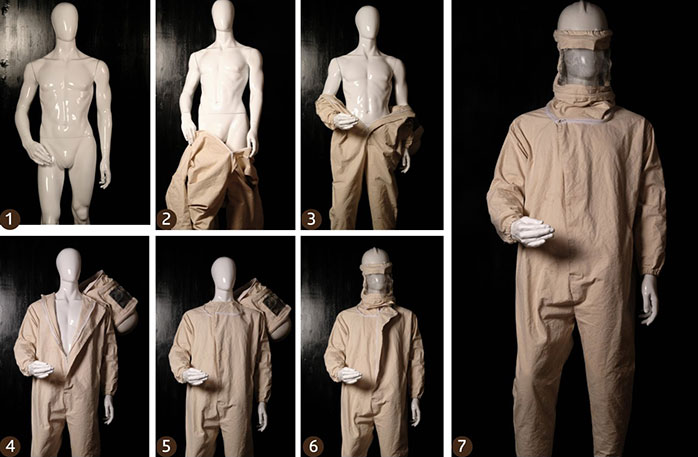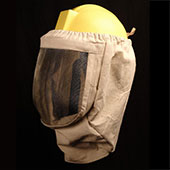The project addresses the issues faced by wild honey harvesters by having a comprehensive study of the entire wild honey harvesting process. The non-violent harvesting of rock bee honey and wax and their post-harvest storage is taken into consideration for developing a comprehensive design approach. Wild bee (Apis Dorsata) is considered as the most defensive of all honey bee species and their nests are mainly built in exposed areas far from the ground, like on tree limbs, under cliff overhangs, and sometimes on buildings. A site visit to Wardha, Maharashtra, improved the knowledge of wild honey harvesting process with the interaction of honey harvesters.
The visit to a workshop where the protective suits are made helped in understanding the issues with the existing suit design and manufacturing process. The tools and methods used to make the suits are very frugal, and a similar approach was continued in the project in order to make it easy for manufacturing. After analyzing the manufacturing process and the interaction with honey harvesters, the design direction of the project was formulated. The design direction was to achieve an optimized solution for the manufacturing of the suit, and use of locally available facilities. The protective suit was required to withstand bee sting and wear and tear from the bark of trees while climbing and crawling during the harvesting process, to ensure safety and personal protection for honey harvesters. Hence, the fabric chosen should be durable enough, so canvas cloth is chosen as the material.
Industrial hard hats had also been integrated to ensure the safety of the skull area. The need for cleaning the suit after every honey collection was taken into account in the design process. The design had evolved to ensure smooth working and safety of the personnel, climbing several beehives one after another without compromising on comfort. Initial ideations with mockups were made and further, feedback from actual users was obtained. Prototype testing with the mock-ups helped in refining the concept. Based on the feedback received from the harvesters, some ideas were taken forward to develop them as concepts with features like - quick fixing of canvas with the helmet, lightweight and durability, ease of washing and ease of manufacturing. Anthropometric measurements of three sizes (small, medium and large) were adopted during fabrication. A full protective suit was made for demonstration and constructive feedback was received. The project was useful in the field of wild honey harvesting to bring in an awareness of safety and self-protection while carrying out the harvesting process.
Case Study Download:
• Wild Honey Bee Harvesters' Protective Suit......
• Wild Honey Bee Harvesters' Protective Suit- Report......


